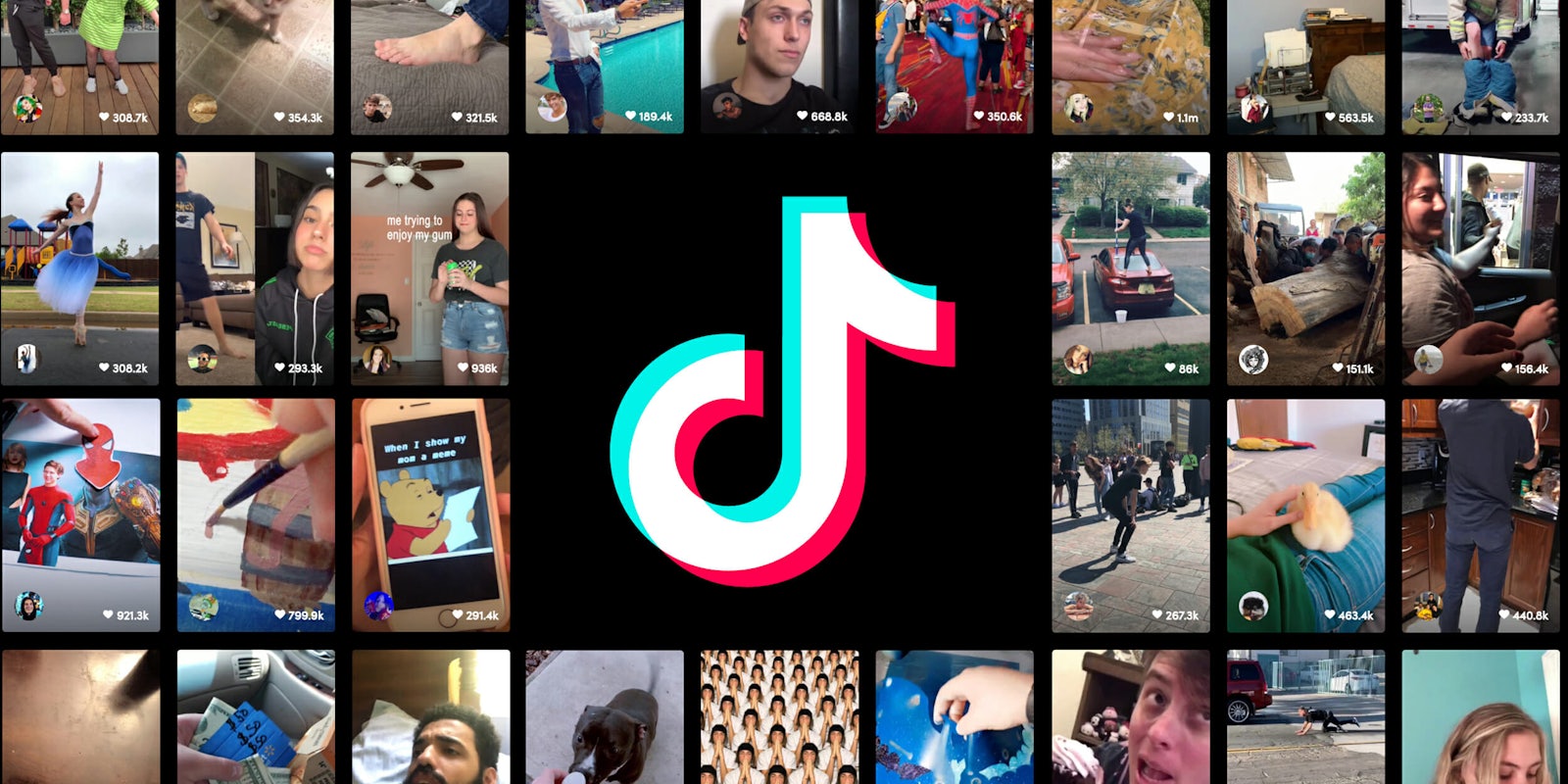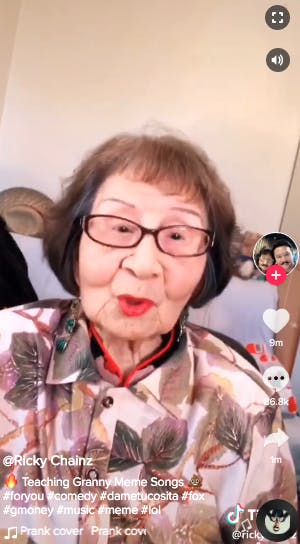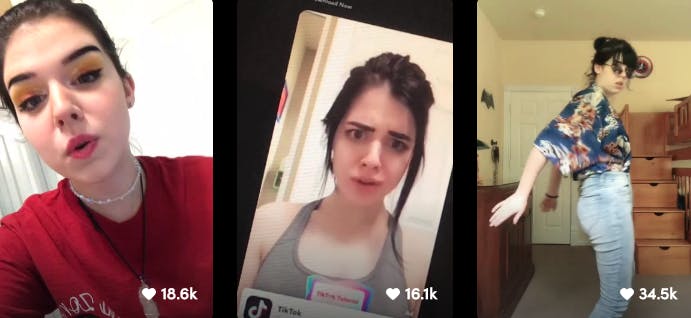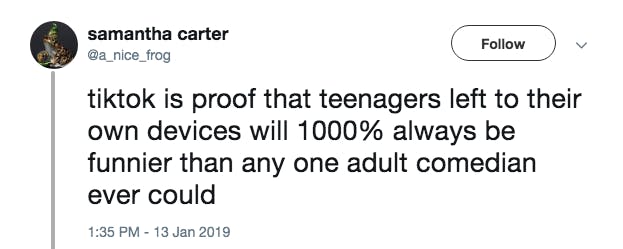TikTok is full of challenges: Dear Kitten, the DNA test, Rich Boy Check. The app’s format makes it easy for users to find, duplicate, and mutate these curated performances; a scroll through the trending hashtags provides a window into this unique synchronized sport. But one challenge on TikTok is finding content that’s actually funny.
The short-form video and lip-syncing app, formerly known as Musical.ly, has found its momentum as a platform for left-field memes and challenges that often leave those who aren’t Extremely Online (or teenagers) confused. TikTok is where the chart-topping “Old Town Road” first went viral as part of the “Yee Yee Juice” challenge, in which users “transform” into cowboys at a crucial moment in the song. Still, that challenge isn’t particularly funny. The fact that the phrase “Yee Yee Juice” has entered the national conversation is funny, however.
Scrolling through the comedy hashtag, a lot of the top-viewed posts are challenge-heavy or rely on parroting audio clips or goofy faces. These performances are plentiful, and part of the reason the label “TikTok comedian” has come to represent a certain kind of risk-free comedy: Content that doesn’t necessarily come from a place of truth or offer a dissenting opinion or insightful commentary. It doesn’t challenge; it’s a performance of a performance, packaged into the framework TikTok provides. A funny face will get someone to stop and engage, if only for a few seconds. And there are a lot of people engaging: TikTok hit 1 billion global downloads earlier this year and added 188 million new users from January to April 2019.
The nature of TikTok—everyone doing the same popular challenges—limits how original the content can be. There’s also a subgenre of “cringe” comedy that’s been quickly funneled into YouTube compilations (many of them with ads), showcasing the app’s more unoriginal and confounding humor. If creators don’t want to be included in TikTok cringe compilations, they most likely have to contact YouTube to get the video taken down.
But what constitutes “cringe” comedy is hard to describe. It’s the goofy-face bits, but it’s also a know-it-when-you-see-it situation. And sometimes “cringe” means it leaves you truly flummoxed: A few months ago, Like and Subscribe creator Jack Wagner posted a compilation of clips from a TikTok challenge that involves people mimicking a baby saying “No” over and over, ostensibly until they get junk food or booze or the material goods they desire. I watched it several times, trying to wrap my brain around what this was and who it was for. Is this commentary on consumerism? Alcoholism? I don’t think the well of ideas goes that deep. But, as I came to find out, you have to submerge yourself deep into TikTok to find the good, weird stuff.
The ‘mad lads’
Google “TikTok comedian” and the first result is a video from YouTuber Caseatron, titled “TikTok ‘Comedians’ Need To Be Stopped.” It’s not clear whether his videos have stopped anyone, but his video and a few others feature two of the app’s popular creators: Jayden Croes has more than 15 million fans on TikTok; his brother Gilmher Croes has more than 17 million. Before TikTok they were fixtures on Musical.ly. One of their most popular videos features the brothers communicating with each other through a series of elastic faces and fluttering tones. The audio sample in the clip has been used in more than 60,000 other TikToks.
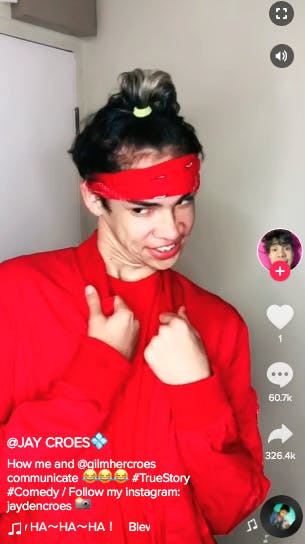
The Croeses are featured in several TikTok cringe compilations, and Caseatron has made lancing TikTok comedians a subgenre on his channel. He’s singled out the “most annoying female TikTok comedian,” his “least favourite” comedian, and the “mad lads” of TikTok, a collection of “absolute specimens” engaging in some mirthless lip-syncing and funny-facing. But “cringe” is being applied to a wide swath of videos, and it doesn’t always track. Some of the content labeled “cringe” doesn’t even elicit an emotional response; it’s just bad. But keywords like “cringe” and “emotional” make the keyword search soup thicker.
Gilmher Croes has been called out for lifting content, but the framework of TikTok is such that a user copying or imitating someone else’s video idea is the idea. A representative for the Croeses tells the Daily Dot that their content has evolved from Musical.ly to TikTok, but they weren’t “really too familiar” with any criticism Gilmher or Jayden has received. The brothers “are just positive and love to have fun and make people happy so their content personifies that.”
READ MORE:
- TikTok’s ‘Save the Turtles’ meme is the last straw
- The curious world of divorce TikTok
- This teen’s TikTok videos are forcing us to relive middle school
TikTok is for an international audience—its parent company is based in China, and one of its largest markets is India—which might explain why some of the most-viewed comedy videos are just faces and dances, a universal medium with no language barrier. The Croeses are cute, young; it’s easy to see why they’re popular (and targets). But TikTok thrives on multiplication. How many people can you watch recite a line from Dude, Where’s My Car? before it starts to lose meaning?
‘You can only do funny faces for so long’
Ricky Chang, who goes by Ricky Chainz on TikTok, has more than 3 million fans and found popularity by featuring his 93-year-old grandmother in his videos. He’s part of a booming network of comedians with more of a premise. And he doesn’t just feature her; he acts with her, too.
He tells the Daily Dot he realized her potential after she butchered a Post Malone song and the clip went viral. He sees his comedy as being on a different level from the “funny face” stuff and knows that kind of comedy can only go so far: “It’s low-level, and the schtick wears out. You can only do funny faces for so long before people realise that that’s all you’ve got. Of course, it helps if you’re attractive too. Usually, the thirst trap TikTokkers last longer, as they are eye candy for teenagers.”
Chang adds that he tries “to keep my content as varied as possible so people never know what to expect and are always waiting for what’s next, but also I have the creative freedom to change and evolve with the market. I think in the end if you want to thrive on TikTok, you need to go a little bit deeper and think outside of the box. The aim of the game is to catch attention and quality always ends up winning.”
Yeah I’m Caroline is another popular creator, with more than 700,000 fans. She creates relatable, charming, sometimes awkward videos and characters and says people have downloaded the app just to follow her. She explains that a lot of the creators who do “funny face” comedy were ones who were big on Musical.ly (like the Croes brothers) and then transitioned to TikTok, and they’re trying to “relate to a much younger audience.” While there’s a lot of that more basic comedy, she says the “sarcastic/dark relatable humor” is “taking over.”
But she brings up another issue: Her videos have been used in ads for TikTok on Snapchat and YouTube, which she says brought in more followers, but TikTok didn’t credit her: “There are a few verified TikTok creators that have confessed to me that they also only downloaded TikTok to watch my videos at first but were then inspired by me to start their own account.”
Caroline had reached out to TikTok about the videos (they used one more than once, she says, but also “about five others”) but received no response. “There’s a definite lack of communication between TikTok and their creators,” she says, “which is definitely something they need to work on.”
After we reached out about Caroline’s videos, we were told a complaint had been received and her clips are no longer being used in ads. Her account has also been verified since that inquiry. TikTok has a creator team that communicates with certain creators, though it’s not clear if they’re handpicked. A job posting from November states that team members work “with creators in different categories and with different following sizes to help them build their accounts, perfect their content strategy, increase their posting frequency, and involve them in scalable creator programs.”
We reached out to TikTok for comment on how it communicates with creators, as well as how it deals with copyright issues. We were directed to posts outlining how to control settings on posts if you don’t want them shared and how to report issues like copyright infringement and inappropriate content.
READ MORE:
- A Lizzo song is the soundtrack for the TikTok DNA test
- TikTok’s ‘chin on palm’ challenge has people scratching their heads
- The ‘Old Town Road’ memes will ride ’til they can’t no more
Chang says his content has been lifted too—someone on YouTube “has stolen every video I’ve created and created a fake YouTube channel pretending to be me.” But he’s a bit more accepting of the ecosystem: “The whole of TikTok is one big remix fest so it’s easy to steal, ripoff, re-create, appropriate other people[’s] content,” he says. “A lot of the times people do not credit others and it gets hard to find out who created it first and who copied another person.
“So I just embrace it. I’ve had so many people rip me off that it just doesn’t phase me anymore.”
Teens, remixed
Standup comedy on TikTok is a little different. You can “perform” standup comedy routines, which could help people who are trying to get into standup or acting, but it’s also underwhelming to watch someone parrot a comedian’s standup bit poorly. Professional comedians haven’t taken over the app yet, and celebrity involvement has been minimal (though TikTok recently brought on DJ Khaled, who’s received criticism for past comments on oral sex, as well as how he markets alcohol on social media).
The #standupcomedy hashtag is heavy on videos from Indian creators and comedians; a large portion of TikTok’s user base is from India, but its growth was upended after an Indian high court banned the app in mid-April, citing its negative influence on children and culture. The ban became its own source of comedy, as people posted particularly bad TikTok clips on Twitter and joked that they were the real reason it was banned.
A lot of the creators doing the best comedy on TikTok are teens, which isn’t that surprising for those of us who lived on Vine. When you look back at the many “Vines that ____” compilations on YouTube, you’ll see a lot of the teens who made it good, and not so many of the braying bros who made it intolerable.
User cloudsauce’s Pornhub parody made the rounds last month, offering a comedic take on the emptiness of our “alone time.” User nikjwells took aim at the glaring difference between donations for Notre Dame and recovery efforts for Flint and Puerto Rico. User imsydf’s BuzzFeed quiz thirst video is the gaping maw of internet culture visualized.
Elsewhere, trends that evolved on TikTok, like the “egirl,” are being gently satirized. Chloe Abbott, who posts as exchlomation, has more than 10,000 fans and says she started using TikTok to help ease her transition into college. But she’s trying to move her content over to YouTube.
“The most glaring issue is that the app’s gimmick encourages theft,” she says. “Through dueting and reusing audio, anyone can take my content and claim all the attention for it while the video I posted receives nothing in return. I’ve never understood the concept of taking my audio and just… acting it out again with no unique spin. It feels very cheap in a lot of cases, but it can be flattering sometimes.”
That seems to be one of the biggest hindrances in creating good original comedy on TikTok: It is often obscured by the audio people use and reuse, though a user’s “original sound” can become its own form of comedic expression. One example is merzbowvevo, who created this snippet of unfettered mumble-rap chaos, which spread to other users.
But Abbott, a film student, questions whether TikTok is sustainable for people wanting to do truly original work. “The bottom line is that TikTok is a bad place for anyone who is sincerely trying to create content,” she says. “It’s been a nice jumping-off point, and I do plan to stay on, but I also plan to move on to platforms more catered toward content creation, like YouTube. TikTok is fun if you’re a casual viewer, but as a creator, it can be incredibly tedious.”
READ MORE:
- ‘Rich Boy Check’ highlights the tragedy and comedy of privilege
- Teen’s TikTok videos spark ‘tea’ jokes
- Even teachers are in on TikTok’s #hitthewoah
Before Vine was killed off, some of the six-second app’s biggest creators reportedly lobbied for better communication between them and the company as well as compensation in exchange for regular original content. More recently, meme creators on Instagram formed a union to push back against stolen content and exploitation. TikTok, which is less than a year old, is a little different: The ecosystem is dependent on cross-pollinating and sharing content, and a few of the creators I spoke with said they couldn’t see something like that coalescing on TikTok.
It’s already seeing competitors with a narrower focus, like Bits, a comedy-centric app that is trying to foster more original content by making users record and edit in-app. TikTok certainly has its own vernacular and flow, one that is perhaps more indicative of this specific community than bigger trends. Comedy is happening on different levels, and the users I spoke with all named off at least five or six other creators they thought were doing funny work on the app. There’s no shortage of people trying.
But the way TikTok built its platform—and the fact that so many users are OK with their content being lifted and transformed upon—signals that sustainability might not come easy. If TikTok is “one big remix fest,” as Chang said, is that better or worse for comedy? The challenge for some users on TikTok might not be making us laugh, but a sense of ownership.
What are we laughing at? Sign up here for the Daily Dot’s comedy newsletter, filled with news and insights from your host, Audra Schroeder.

